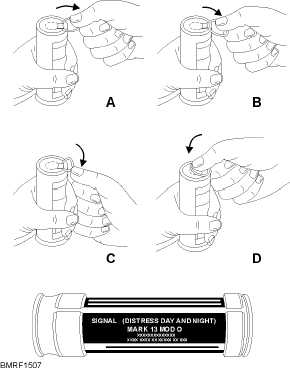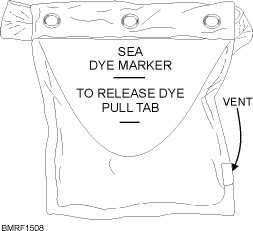containers, stow them carefully so that you won’t lose
any water. Cover all open containers to slow down
evaporation; use those you don’t have covers for first.
During the rain, drink all you can hold.
In polar areas, you can obtain freshwater from old
sea ice. Old sea ice is a bluish color, splinters easily, and
is nearly free from salt. New ice is milky in color, hard,
and salty. You may also obtain freshwater from
icebergs, but use caution. As its underwater portion
melts, an iceberg gets top heavy and can capsize without
warning.
SURVIVAL STEPS
Most of the following survival information applies
to persons in lifeboats, but some of this information
applies to persons in the water. In trying to survive at
sea, you will face thirst, hunger, and exposure whether
you are in a lifeboat or in the water. You can endure
these conditions, however, if you take the proper steps.
Thirst
The one absolutely essential requirement for
survival is drinking water. Without it, death will most
likely occur in 8 to 12 days. Normally, you need about 2
quarts of water a day; but because of inactivity and lack
of food, you can survive on as little as 6 ounces a day in a
lifeboat.
Water is lost from the body by the evaporation of
perspiration and through the digestive process. Some
actions you can take to reduce water loss include the
following:
Keep your clothes wet during the day (weather
permitting, of course), but dry them before
sundown.
Wear the least amount of clothes possible,
depending upon your need for protection from
the elements.
If water is scarce, eat sparingly.
Never drink seawater or urine. To do so would
only aggravate your thirst and increase body
water loss with a subsequent speedup in
dehydration.
Do not drink your entire daily water ration at one
time. It is better to drink small amounts three or
four times daily.
Hunger
The food rations supplied with each lifeboat are
15-11
Student Notes:
Figure 15-7.—Igniting the MK 13 distress signal.
Figure 15-8.—Dye marker.




